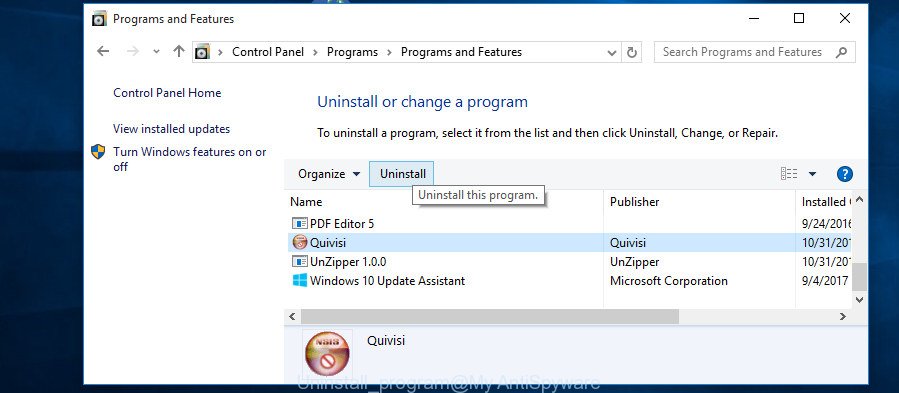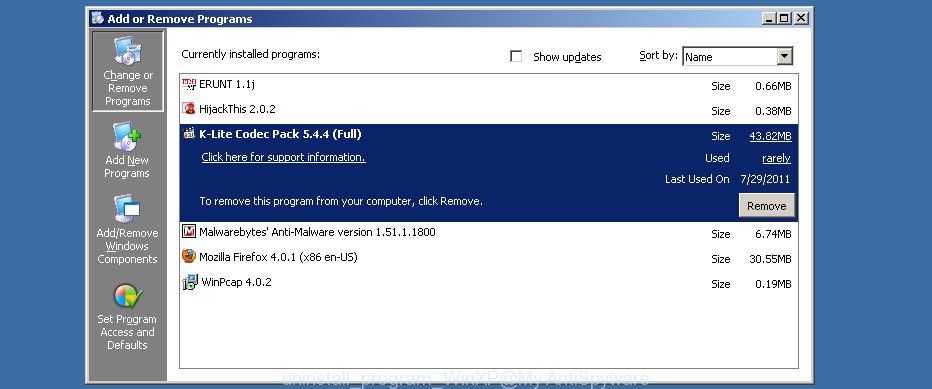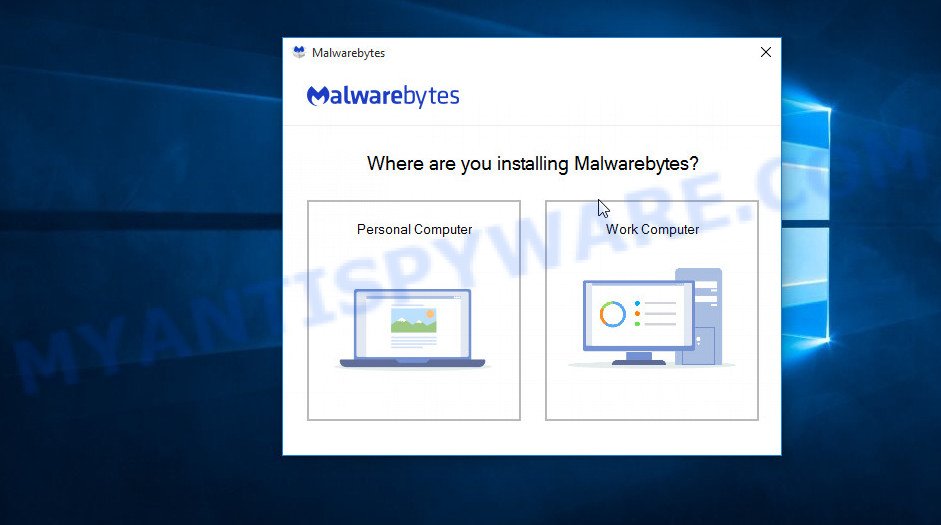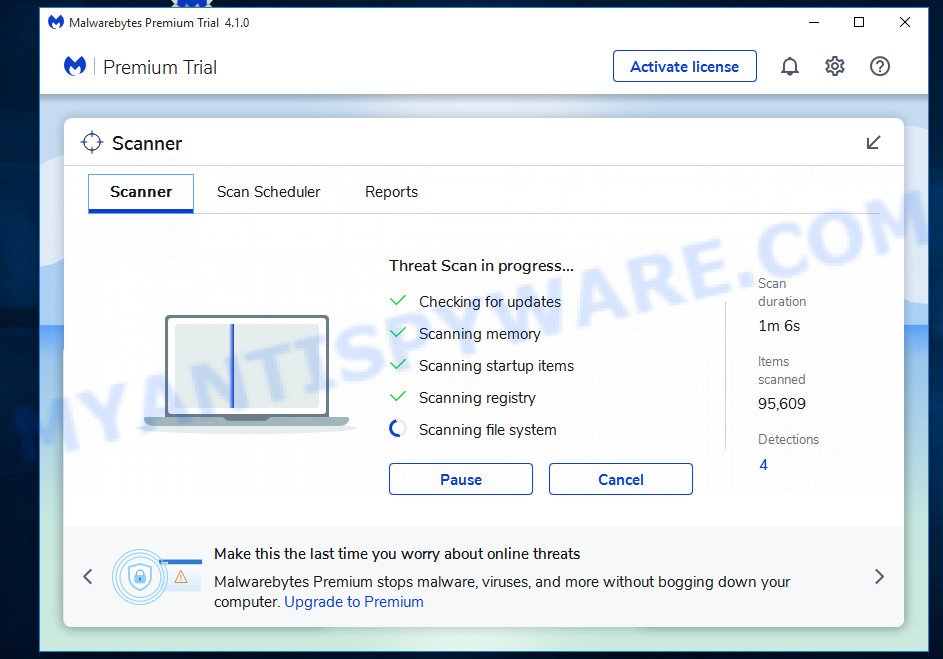What is Test Certificate?
Test Certificate is supposed to be a browser extension that will improve the browsing experience, but according to security researchers, this extension acts as Browser hijacker. The aim of browser hijackers is to make advertising profit. For example, a browser hijacker redirects the user’s homepage to the browser hijacker’s page that contains advertisements or sponsored links; a browser hijacker redirects the user web searches to a link the browser hijacker wants the user to see, rather than to legitimate search engine results. When the user clicks on ads in the search results, the developers behind browser hijackers gets paid. The makers of browser hijackers can collect user info such as user browsing habits as well as browsing history and sell this information to third parties for marketing purposes.

Unwanted search ads
The Test Certificate browser hijacker takes over your web browser’s default search provider and controls what will be shown to you whenever you do a searching. Other than the search results, it also provides a lot of unwanted ads on the search page. Some of these advertisements developed to trick you into buying some questionable products and apps. Moreover, sometimes, those advertisements could redirect you to misleading or malicious web sites.
As well as unwanted internet browser redirects, the Test Certificate browser hijacker can gather your Internet browsing activity by recording IP addresses, web-browser version and type, web sites visited, Internet Service Provider (ISP), URLs visited and cookie information. Such kind of behavior can lead to serious security problems or user info theft. This is another reason why the browser hijacker should be uninstalled as quickly as possible.
So, if you happen to encounter a browser hijacker or other such problem, then be quick and take effort to remove the browser hijacker as soon as possible. Follow the steps below to remove Test Certificate. Let us know how you managed by sending us your comments please.
How can a browser hijacker get on your PC
Browser hijackers such as Test Certificate can get added to your web-browser or personal computer when you visit a web site and click an Install button, or when you download and run a dubious program, or when you install freeware that includes a PUP (potentially unwanted program). Be very attentive when installing any software and make sure you deselect any options for bundled applications that you do not want.
Threat Summary
| Name | Test Certificate |
| Type | home page hijacker, browser hijacker, search engine hijacker, redirect virus, PUP |
| Affected Browser Settings | search engine, homepage, newtab page URL |
| Distribution | malicious pop-up advertisements, free applications setup files, fake software updaters |
| Symptoms | Advertisements appear in places they shouldn’t be. Your web browser is redirected to web sites you did not want. There is an unwanted program in the ‘App & Features’ section of MS Windows settings. An unwanted browser extension appears in your browser. Your web-browser home page or search engine keeps changing or is not set to Google anymor. |
| Removal | Test Certificate removal guide |
How to remove Test Certificate from Windows 10 (8, 7, XP)
If you have unwanted home page or search provider, consistent popups or advertisements, slow computer, crashing PC problems, you are in need of browser hijacker removal assistance. The tutorial below will guide you forward to get Test Certificate hijacker removed and will assist you get your PC operating at peak capacity again.
To remove Test Certificate, use the steps below:
- How to manually remove Test Certificate
- Automatic Removal of Test Certificate
- How to stop Test Certificate redirect
How to manually remove Test Certificate
Manually deleting the browser hijacker is also possible, although this approach takes time and technical prowess. You can sometimes identify browser hijacker in your computer’s list of installed programs and uninstall it as you would any other unwanted program.
Check the list of installed apps first
Check out the Microsoft Windows Control Panel (Programs and Features section) to see all installed applications. We recommend to click on the “Date Installed” in order to sort the list of software by the date you installed them. If you see any unknown and dubious programs, they are the ones you need to uninstall.
Make sure you have closed all web browsers and other software. Next, uninstall any unwanted and suspicious applications from your Control panel.
Windows 10, 8.1, 8
Now, click the Windows button, type “Control panel” in search and press Enter. Select “Programs and Features”, then “Uninstall a program”.

Look around the entire list of software installed on your PC system. Most likely, one of them is the Test Certificate browser hijacker. Select the questionable application or the program that name is not familiar to you and delete it.
Windows Vista, 7
From the “Start” menu in MS Windows, choose “Control Panel”. Under the “Programs” icon, select “Uninstall a program”.

Select the suspicious or any unknown programs, then click “Uninstall/Change” button to uninstall this undesired program from your PC system.
Windows XP
Click the “Start” button, select “Control Panel” option. Click on “Add/Remove Programs”.

Choose an undesired program, then press “Change/Remove” button. Follow the prompts.
Remove Test Certificate browser hijacker from internet browsers
Unwanted homepage, browser redirects or other symptoms of browser hijacker in your web-browser is a good reason to find and remove malicious addons. This is an easy way to restore web-browsers settings and not lose any important information.
You can also try to remove Test Certificate browser hijacker by reset Google Chrome settings. |
If you are still experiencing problems with Test Certificate hijacker removal, you need to reset Mozilla Firefox browser. |
Another solution to delete Test Certificate hijacker from IE is reset IE settings. |
|
Automatic Removal of Test Certificate
Is your Windows computer infected with browser hijacker? Then don’t worry, in the following guidance, we’re sharing best malicious software removal utilities which can be used to remove Test Certificate from the Edge, Microsoft Internet Explorer, Mozilla Firefox and Chrome and your device.
Use Zemana Anti-Malware to remove Test Certificate browser hijacker
Zemana Anti Malware is a free program for Windows operating system to scan for and remove PUPs, adware, harmful web-browser plugins, browser toolbars, and other unwanted apps such as Test Certificate hijacker.

- First, visit the page linked below, then press the ‘Download’ button in order to download the latest version of Zemana AntiMalware (ZAM).
Zemana AntiMalware
165074 downloads
Author: Zemana Ltd
Category: Security tools
Update: July 16, 2019
- Once the download is finished, close all programs and windows on your personal computer. Open a file location. Double-click on the icon that’s named Zemana.AntiMalware.Setup.
- Further, click Next button and follow the prompts.
- Once install is finished, click the “Scan” button . Zemana Free program will scan through the whole device for the Test Certificate hijacker. Depending on your PC system, the scan may take anywhere from a few minutes to close to an hour. While the Zemana Free tool is scanning, you may see how many objects it has identified as being affected by malicious software.
- Once finished, the results are displayed in the scan report. In order to delete all items, simply click “Next”. When disinfection is done, you may be prompted to restart your device.
Remove Test Certificate hijacker from web-browsers with HitmanPro
HitmanPro is a portable program that requires no hard installation to identify and remove Test Certificate hijacker. The application itself is small in size (only a few Mb). Hitman Pro does not need any drivers and special dlls. It is probably easier to use than any alternative malicious software removal tools you’ve ever tried. Hitman Pro works on 64 and 32-bit versions of Windows 10, 8, 7 and XP. It proves that removal tool can be just as effective as the widely known antivirus programs.
Visit the following page to download the latest version of Hitman Pro for Windows. Save it to your Desktop.
Download and run Hitman Pro on your personal computer. Once started, press “Next” button . HitmanPro application will scan through the whole PC for the Test Certificate browser hijacker. This procedure may take some time, so please be patient. .

Once the scan get finished, Hitman Pro will display a screen which contains a list of malicious software that has been found.

When you are ready, click Next button.
It will display a dialog box, click the “Activate free license” button to start the free 30 days trial to remove all malware found.
Use MalwareBytes to delete Test Certificate browser hijacker
We recommend using the MalwareBytes Free which are completely clean your computer of the hijacker. The free tool is an advanced malware removal program developed by (c) Malwarebytes lab. This program uses the world’s most popular anti-malware technology. It is able to help you delete hijacker, PUPs, malicious software, adware, toolbars, ransomware and other security threats from your computer for free.
Visit the page linked below to download the latest version of MalwareBytes AntiMalware for Microsoft Windows. Save it to your Desktop.
327297 downloads
Author: Malwarebytes
Category: Security tools
Update: April 15, 2020
After downloading is done, close all applications and windows on your computer. Open a directory in which you saved it. Double-click on the icon that’s named MBSetup as on the image below.
![]()
When the installation begins, you will see the Setup wizard that will help you install Malwarebytes on your computer.

Once install is complete, you’ll see window like below.

Now click the “Scan” button to begin scanning your personal computer for the Test Certificate hijacker. This procedure can take quite a while, so please be patient. When a threat is found, the number of the security threats will change accordingly.

When MalwareBytes Anti Malware (MBAM) has completed scanning, MalwareBytes Free will create a list of unwanted programs and browser hijacker. Make sure all items have ‘checkmark’ and press “Quarantine” button.

The Malwarebytes will now begin to remove Test Certificate browser hijacker. When finished, you may be prompted to reboot your personal computer.

The following video explains step-by-step guide on how to remove hijacker, adware and other malicious software with MalwareBytes Free.
How to stop Test Certificate redirect
One of the worst things is the fact that you cannot block malicious web-sites using only built-in Microsoft Windows capabilities. However, there is a program out that you can use to stop unwanted internet browser redirects, ads and pop ups in any modern web-browsers including Google Chrome, Microsoft Edge, Microsoft Internet Explorer and Mozilla Firefox. It’s called Adguard and it works very well.
First, visit the page linked below, then press the ‘Download’ button in order to download the latest version of AdGuard.
26905 downloads
Version: 6.4
Author: © Adguard
Category: Security tools
Update: November 15, 2018
Once downloading is complete, double-click the downloaded file to start it. The “Setup Wizard” window will show up on the computer screen as on the image below.

Follow the prompts. AdGuard will then be installed and an icon will be placed on your desktop. A window will show up asking you to confirm that you want to see a quick guidance like below.

Press “Skip” button to close the window and use the default settings, or click “Get Started” to see an quick instructions that will assist you get to know AdGuard better.
Each time, when you start your personal computer, AdGuard will launch automatically and stop undesired advertisements, block harmful and misleading websites. For an overview of all the features of the application, or to change its settings you can simply double-click on the AdGuard icon, that may be found on your desktop.
To sum up
Once you have removed the browser hijacker using this steps, Microsoft Internet Explorer, Mozilla Firefox, Chrome and Edge will no longer display any unwanted ads. Unfortunately, if the step-by-step guidance does not help you, then you have caught a new hijacker, and then the best way – ask for help here.



















